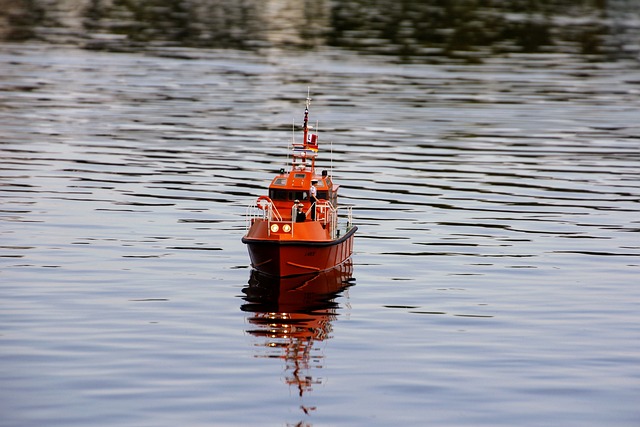Lifeboat Services: Ensuring Safety at Sea
Lifeboat services play a crucial role in maritime safety, offering emergency support during distress situations at sea. Whether it’s a passenger ship facing mechanical failure or a fishing boat caught in a storm, lifeboats serve as a vital lifeline, ensuring the safety of crew and passengers. This blog explores the significance of lifeboat service, how they operate, and their importance in safeguarding lives.
What Are Lifeboat Services?
Lifeboat services involve the deployment and use of specially designed boats that are equipped to rescue individuals in the event of an emergency at sea. These boats are usually stored on ships, rigs, or coastal stations, ready to be launched quickly when needed. They are built to withstand harsh weather conditions and are designed to float even if they are partially submerged.
Some key functions of lifeboat services include:
- Rescue Operations: Lifeboats are often used to rescue individuals from ships in distress, such as during storms, collisions, or other emergencies. They are launched quickly and can navigate rough seas to reach those in need.
- Evacuation Assistance: In case of fire, flooding, or other critical incidents on a vessel, lifeboats provide a safe means of evacuation, ensuring that passengers and crew can abandon ship safely.
- Search and Rescue Missions: Lifeboat services are often part of coordinated search and rescue operations, helping to locate and assist individuals who are lost at sea or stranded on vessels.
- Medical Support: Some lifeboats are equipped with medical supplies, and trained personnel provide first aid during rescues. This immediate care can be vital for individuals suffering from hypothermia, injuries, or other medical emergencies.
Types of Lifeboats
There are several different types of lifeboats, each designed for specific rescue scenarios:
- Inflatable Lifeboats: Commonly used for quick deployment, these lightweight boats are easy to launch and maneuver, making them ideal for fast rescues in calm waters or near the shore.
- Rigid Lifeboats: Built with a durable hull, rigid lifeboats are more robust and can handle rough seas. They are often equipped with an engine, allowing them to operate independently of the ship that deployed them.
- Totally Enclosed Lifeboats: Designed for maximum safety, totally enclosed lifeboats provide complete protection from the elements. They are commonly used in oil rigs and large ships, where extreme weather conditions or dangerous environments require more secure evacuation methods.
Why Are Lifeboat Services Important?
The importance of lifeboat services cannot be overstated. These services have saved countless lives and continue to be a cornerstone of maritime safety. Here are several reasons why lifeboat services are so critical:
- Rapid Response to Emergencies: In the event of an emergency, time is of the essence. Lifeboat services offer a rapid response, ensuring that individuals can be rescued before a situation becomes catastrophic.
- Protecting Lives at Sea: The sea is an unpredictable environment, and even the most well-prepared vessels can encounter problems. Lifeboat services provide a safety net, ensuring that there is always a plan for evacuating and rescuing those on board.
- Supporting Global Shipping and Tourism: With millions of passengers and crew members traveling on ships every day, lifeboat services are an integral part of global maritime operations. They ensure the safety of both commercial and passenger vessels, boosting confidence in the shipping and cruise industries.
- Environmental and Economic Impact: Lifeboat services not only save lives but also help minimize environmental disasters. Quick evacuation and rescue efforts can prevent oil spills, sinking ships, or other accidents that could have significant environmental and economic consequences.
The Evolution of Lifeboat Services
Lifeboat services have come a long way since their inception. Early lifeboats were often basic rowboats with limited capabilities. Over time, technological advancements have revolutionized lifeboat design, making them faster, safer, and more reliable. Modern lifeboats are equipped with navigation systems, communication devices, and safety gear to ensure effective rescues in various conditions.
Many countries have national or regional organizations dedicated to lifeboat services, such as the Royal National Lifeboat Institution (RNLI) in the United Kingdom. These organizations operate through a combination of professional staff and volunteers, who are often on standby to respond to emergencies 24/7.
The Role of Technology in Lifeboat Services
Advancements in technology have significantly enhanced the effectiveness of lifeboat services. Some of the key innovations include:
- GPS and Tracking Systems: Lifeboats are equipped with GPS systems, allowing rescuers to track their location and communicate with authorities onshore.
- Self-Righting Mechanisms: Many lifeboats now have self-righting designs, meaning that if they capsize, they will automatically return to an upright position, ensuring the safety of those onboard.
- Remote-Controlled Lifeboats: In dangerous situations, some lifeboats can be remotely controlled, allowing rescue operations to be conducted without risking the lives of rescuers.
Conclusion
Lifeboat services are an indispensable part of maritime safety, providing essential support during emergencies at sea. As technology continues to evolve, these services will become even more efficient and effective, saving more lives and ensuring that maritime travel remains as safe as possible. Whether for commercial shipping, tourism, or offshore industries, the presence of reliable lifeboat services is crucial to maintaining safety and peace of mind on the open seas.














Post Comment